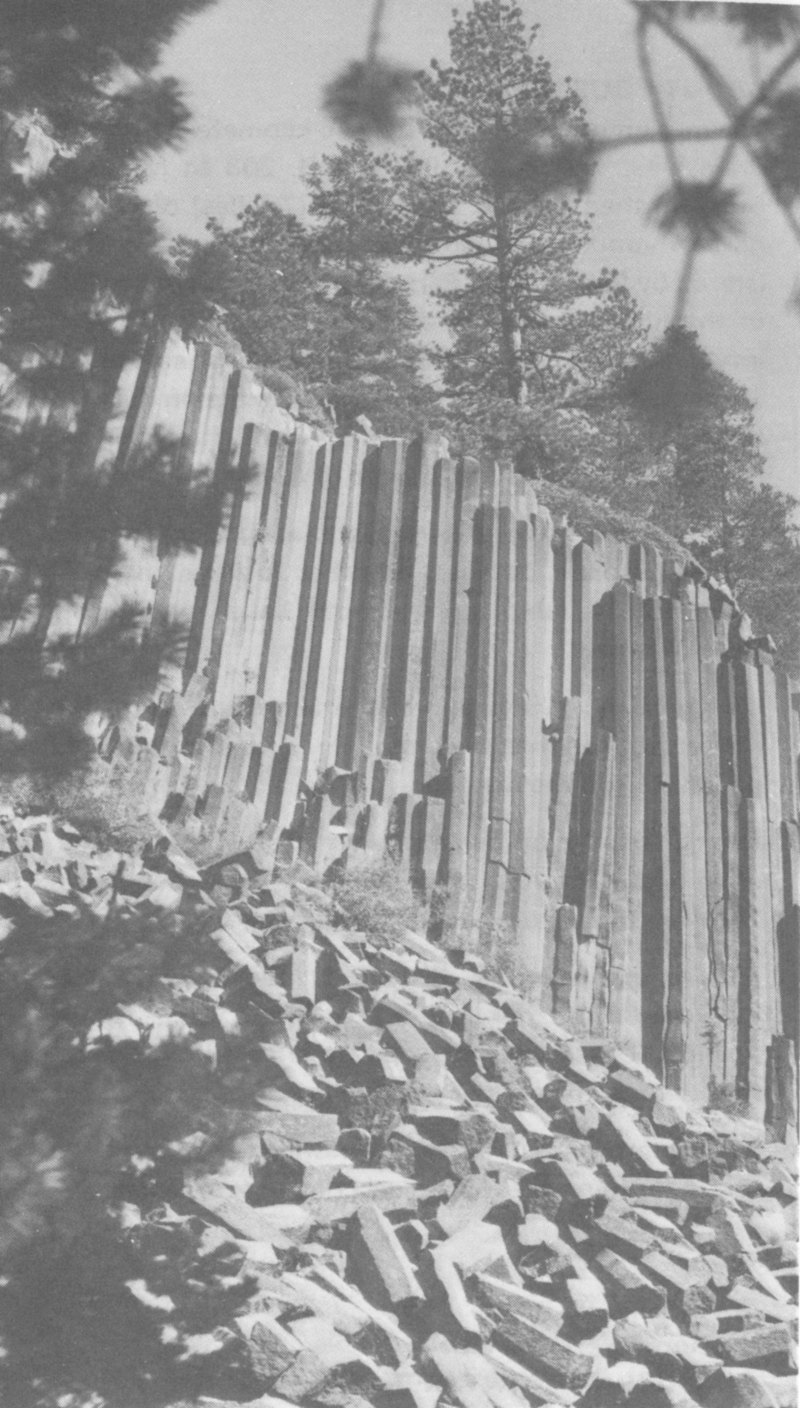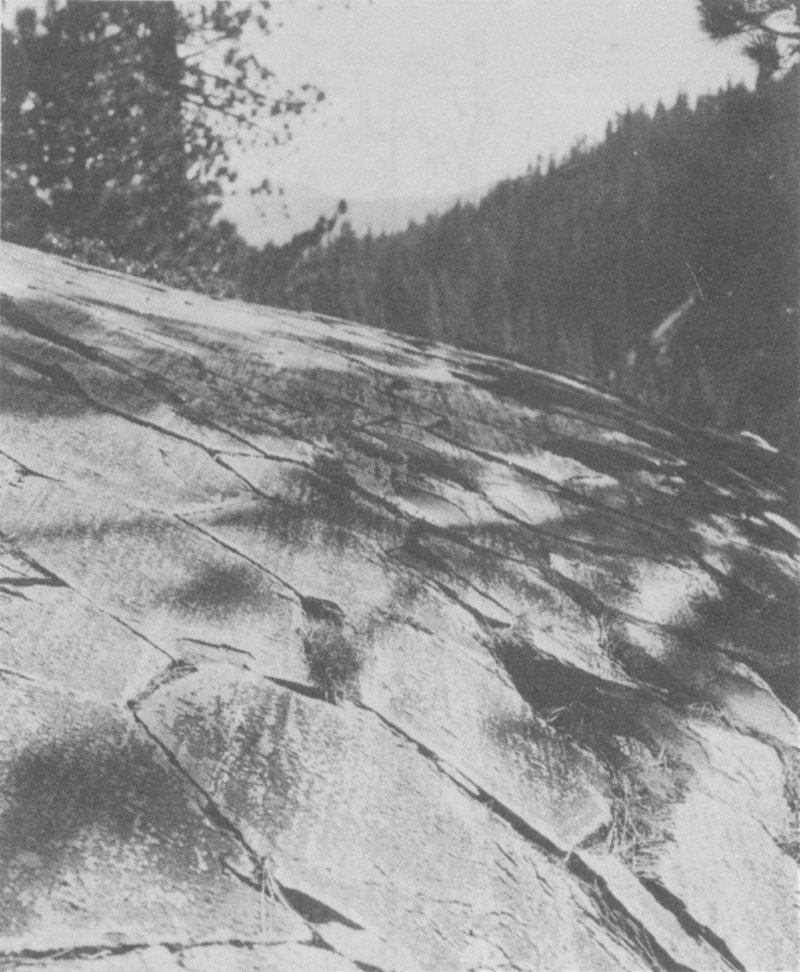
Devils Postpile
NATIONAL MONUMENT • CALIFORNIA
DEVILS POSTPILE NATIONAL MONUMENT
Along the picturesque Middle Fork of the San JoaquinRiver at 2,300 meters (7,600 feet) on the westernslopes of the Sierra Nevada lies Devils PostpileNational Monument. The 324-hectare (800-acre)monument near the resort community of MammothLakes includes one dominant feature: a formation ofcolumnar basalt known as Devils Postpile. Anotherimportant feature in the area is Rainbow Falls. Pumiceis the dominant rock-type encountered, but basalt,andesite, rhyodacite, and granite lie just under thesurface and crop out in many places. Plants andanimals are typical of lodgepole pine and red firforests. To see the features of the monument onemust walk.
DEVILS POSTPILE
The formation of Devils Postpile began when basaltlava erupted in the valley of the Middle Fork of theSan Joaquin River. As lava flowed from the vent, itfilled the valley near the Postpile to a depth of 122meters (400 feet). Recent radiometric dating of rocksthought to correlate with basalt of Devils Postpilesuggest an age of less than 100,000 years.
Surface cracks formed when tensions caused by theshrinkage of the cooling lava were greater than thestrength of the lava itself. Each crack branched whenobtaining a critical length and together with othercracks formed a pattern on the surfaces of the flow.Ideal conditions allowed surface cracks to deepen,resulting in the formation of long columns.

Approximately 10,000 years ago, glaciers floweddown the Middle Fork of the San Joaquin River. Thismoving ice easily overrode the fractured mass oflava and quarried away one side of the Postpile,exposing a sheer wall of columns 18 meters (60 feet)high. Many fallen columns now lie fragmented on thetalus slope below.
A hike to the top of the Postpile reveals not only across section of the posts, but the most interestingeffect of the ice—polished tops of the basalt columns.Here, the column ends are exposed like a tiled floorand exhibit parallel striations where the glacier draggedrocks across them.
Even though Devils Postpile is among the world’sfinest examples of columnar-jointed basalt, it is notunique. Giant’s Causeway in Ireland and Fingal’s Cavein Scotland are similar formations.
SODA SPRINGS
Nearby mineral springs are evidence of recent localvolcanic activity. The Soda Springs lie on a gravel barin the San Joaquin River just north of the Postpile.Here, gases driven upward from hot areas deep inthe earth combine with ground water to producecold and highly carbonated mineralized springs. Theiron present in Soda Springs water oxidizes onexposure to the atmosphere and stains river gravel areddish brown.

SAFETY
For your safety, remember that there are hazards inthe mountains that usually do not exist in the city.Stay on designated trails; these are the safest placesto hike. Use caution when viewing features fromnear cliff or gorg